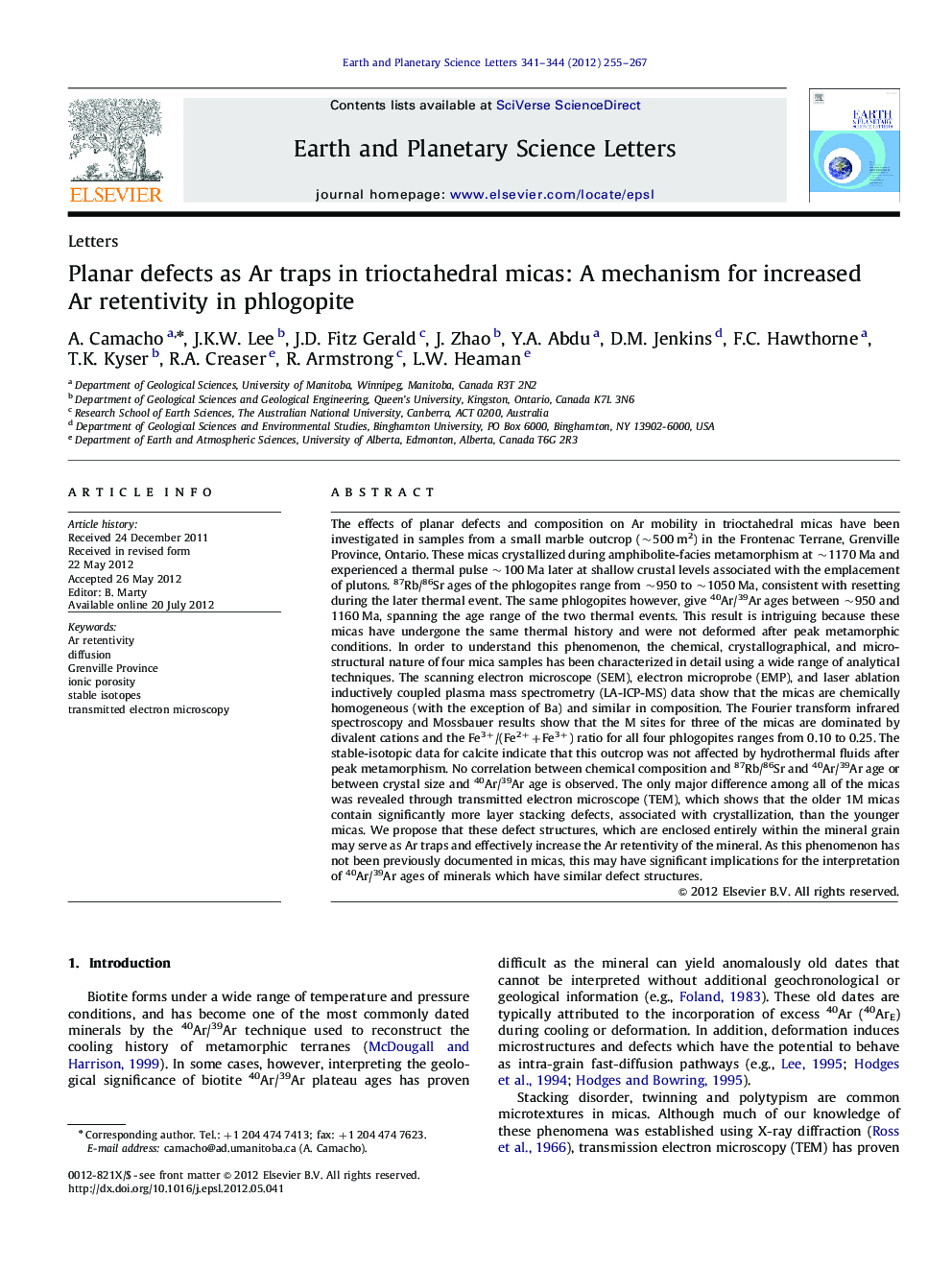| Article ID | Journal | Published Year | Pages | File Type |
|---|---|---|---|---|
| 6430553 | Earth and Planetary Science Letters | 2012 | 13 Pages |
The effects of planar defects and composition on Ar mobility in trioctahedral micas have been investigated in samples from a small marble outcrop (â¼500Â m2) in the Frontenac Terrane, Grenville Province, Ontario. These micas crystallized during amphibolite-facies metamorphism at â¼1170Â Ma and experienced a thermal pulse â¼100Â Ma later at shallow crustal levels associated with the emplacement of plutons. 87Rb/86Sr ages of the phlogopites range from â¼950 to â¼1050Â Ma, consistent with resetting during the later thermal event. The same phlogopites however, give 40Ar/39Ar ages between â¼950 and 1160Â Ma, spanning the age range of the two thermal events. This result is intriguing because these micas have undergone the same thermal history and were not deformed after peak metamorphic conditions. In order to understand this phenomenon, the chemical, crystallographical, and microstructural nature of four mica samples has been characterized in detail using a wide range of analytical techniques. The scanning electron microscope (SEM), electron microprobe (EMP), and laser ablation inductively coupled plasma mass spectrometry (LA-ICP-MS) data show that the micas are chemically homogeneous (with the exception of Ba) and similar in composition. The Fourier transform infrared spectroscopy and Mossbauer results show that the M sites for three of the micas are dominated by divalent cations and the Fe3+/(Fe2++Fe3+) ratio for all four phlogopites ranges from 0.10 to 0.25. The stable-isotopic data for calcite indicate that this outcrop was not affected by hydrothermal fluids after peak metamorphism. No correlation between chemical composition and 87Rb/86Sr and 40Ar/39Ar age or between crystal size and 40Ar/39Ar age is observed. The only major difference among all of the micas was revealed through transmitted electron microscope (TEM), which shows that the older 1M micas contain significantly more layer stacking defects, associated with crystallization, than the younger micas. We propose that these defect structures, which are enclosed entirely within the mineral grain may serve as Ar traps and effectively increase the Ar retentivity of the mineral. As this phenomenon has not been previously documented in micas, this may have significant implications for the interpretation of 40Ar/39Ar ages of minerals which have similar defect structures.
⺠Planar defects in mica are not correlated with enhanced Ar diffusivity. ⺠Chemical composition of mica is not linked with Ar retentivity. ⺠Planar defects can act as traps for Ar. ⺠Octahedral vacancies may act as reservoirs for excess argon.
